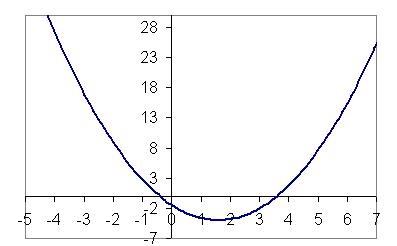Or search by topic
Number and algebra
Geometry and measure
Probability and statistics
Working mathematically
Advanced mathematics
For younger learners
Root Hunter



Take a look at the function in the graph below.

The graph is positive for $x = 5$ and negative for $x = 3$. This means that the graph must cut the $x$ axis somewhere between $3$ and $5$.
Although in this case the result is obvious (because we have the whole graph to look at!), we can also use this idea to show that more tricky functions also have roots.
Use this idea to show that these functions possess at least one solution $f(x) = 0$:
$$ f(x)=\frac{1}{x-2}+\frac{1}{x-3} $$ $$f(x)= x^x - 1.5 x$$ $$f(x)= x^{1000000}+{1000000}^x - 17$$ $$f(x)=\cos(\sin(\cos x)) - \sin(\cos(\sin x)) $$
Optional extension activity: Can you make a spreadsheet that helps you find the numerical values of the roots to, say, four decimal places?
You may also like
Circles Ad Infinitum
A circle is inscribed in an equilateral triangle. Smaller circles touch it and the sides of the triangle, the process continuing indefinitely. What is the sum of the areas of all the circles?
Climbing Powers
$2\wedge 3\wedge 4$ could be $(2^3)^4$ or $2^{(3^4)}$. Does it make any difference? For both definitions, which is bigger: $r\wedge r\wedge r\wedge r\dots$ where the powers of $r$ go on for ever, or $(r^r)^r$, where $r$ is $\sqrt{2}$?

